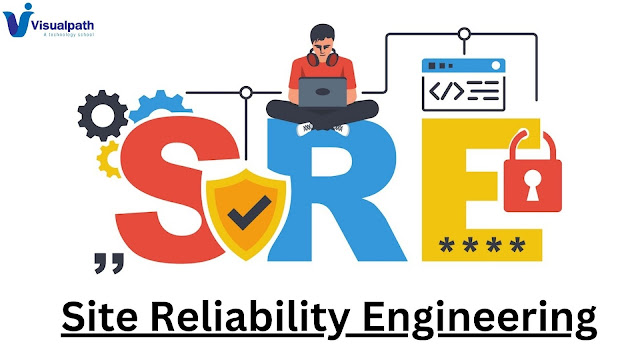Site Reliability Engineering - Collaboration and Integration
Introduction:
Site
Reliability Engineering (SRE) is an approach to running large-scale,
reliable services. It originated at Google and has since been adopted and
adapted by many other organizations. SRE emphasizes collaboration and
integration between development and operations teams to ensure that systems are
reliable, scalable, and efficient. Here are some key aspects of the paradigm of
collaboration and integration change in the context of SRE:
1. Blurring the Lines between Development and Operations:
In traditional setups, there might be a clear divide between development and operations teams. SRE breaks down these silos by encouraging collaboration and shared responsibilities. SREs typically have a software engineering background and work closely with developers to bridge the gap between building and operating systems.
2. Automation and Codifying Operations:
SRE places a strong emphasis on automation. By codifying operational tasks, teams can reduce manual errors, increase repeatability, and allow for better collaboration between development and operations. Infrastructure as Code (IaC) and automation tools are often used to manage and provision resources.
3. Service Level Objectives (SLOs) and Service Level Indicators (SLIs):
SRE introduces the concept of SLOs and SLIs, which are metrics used to define and measure the reliability of a service. By setting clear objectives and indicators, both development and operations teams have a shared understanding of the expected service performance. This helps in aligning goals and prioritizing efforts.
4. Error Budgets:
SRE introduces the concept of error budgets, which is the allowed amount of downtime or errors in a service over a specific period. This metric encourages a balance between innovation (rolling out new features) and reliability (avoiding service disruptions). It fosters collaboration between development and operations to stay within the defined error budget.
5. Incident Response and Post-Incident Reviews:
SRE emphasizes a blame-free culture when it comes to incidents. When issues arise, it's important to focus on learning and improving systems rather than blaming individuals or teams. Post-incident reviews involve both development and operations teams to analyze what happened, why it happened, and how to prevent similar incidents in the future.
6. Monitoring and Observability:
SRE encourages the use of comprehensive monitoring and observability tools. This enables both development and operations teams to have a clear understanding of the system's behavior. Collaboration is essential in defining relevant metrics, setting up monitoring tools, and interpreting the data to identify potential issues.
7. Capacity Planning and Scaling:
Collaboration is crucial in planning for capacity and scaling. Developers need to work closely with SREs to understand the resource requirements of their applications, and SREs need to ensure that the infrastructure can scale to meet the demands. This collaborative approach ensures that systems can handle growth without sacrificing reliability. -Site Reliability Engineering Course
In summary, the paradigm of collaboration and integration in Site Reliability Engineering is about breaking down traditional barriers between development and operations, fostering shared responsibilities, and leveraging automation and data-driven approaches to ensure the reliability and scalability of systems. It's a cultural shift that prioritizes collaboration, learning, and continuous improvement.
Visualpath is the Best Site Reliability
Engineer Online Training
Institute in Ameerpet, Hyderabad. Avail complete
Site Reliability Engineering Online Training
by simply enrolling in our institute, Hyderabad. You will get the best course
at an affordable cost.
Attend Free Demo
Call on
- +91-9989971070.
Visit: https://www.visualpath.in/site-reliability-engineering-sre-online-training-hyderabad.html




Comments
Post a Comment